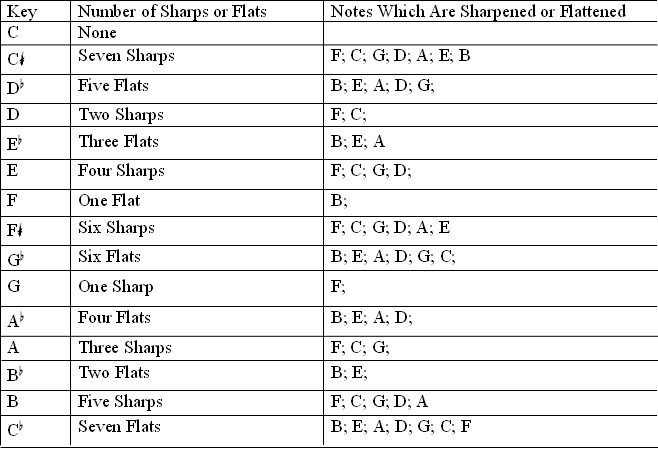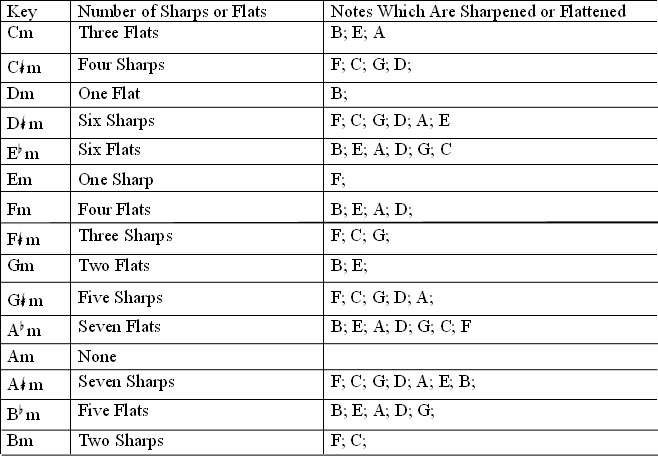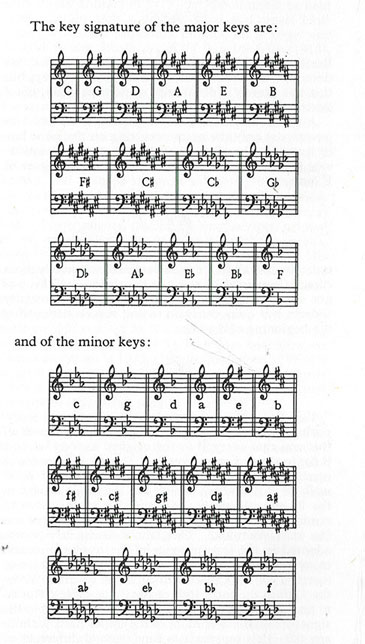Music TheoryThe following section explains the concepts of Pitch, Note, Keys, Key Signature, Sharps, Naturals and Flats for those who are unfamiliar with these terms. PitchPitch is defined scientifically: the pitch of a note is determined by the frequency of the vibration. A low note vibrates slowly, a high notes vibrates quickly. Therefore, a correctly tuned harp string, in terms of pitch, is one that has the universally* accepted amount of vibrations per second for that particular note: for example, A above Middle C would vibrate 440 times per second. It it vibrated 441 times per second that string would be said to be sounding sharp: if 439 times per second it would be flat. *in Western music terms. NoteThe term, note, is used to describe the concept of pitch in musical terms. However, whereas pitch alters in small increments, notes are distinct entities: The note, G, for example, can be sounded noticeably sharp, but it is still the note G. Sharp, Flat and NaturalA sharp raises by a semi-tone the pitch of the note to which it refers. Thus the note C Sharp would be a semi-tone higher than a C Natural. A flat lowers the pitch by a semi-tone. A natural is a note which is neither sharp, nor flat. KeyWhen musicians talk about the key of a piece of music, they really mean how many sharps or flats it has. Each major and each minor key has its own unique set. So, for instance, the keys of A major and C sharp minor* have three sharps. The keys of F major and D minor, have one flat. See these tables for lists of all major and minor keys.   *Called relative keys, as they both have same amount of sharps or flats. Each major key has a relative minor, which shares the same key signature. Key SignatureSharps or flats placed on the stave in diagrammatic form at the beginning of a piece to indicate how many sharps or flats there are – and thus, the key of the piece of music. The term, Key Signature, is also used loosely to describe how many sharps or flats a key has in general terms, i.e., what is the key signature of D major?  |
